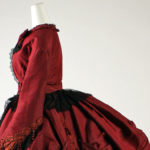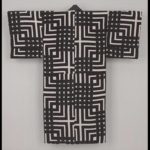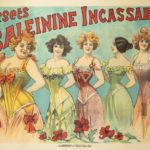robe volante
A dress originating in 18th-century France which was pleated at the shoulder and hung loose down, worn over hoops.
A dress originating in 18th-century France which was pleated at the shoulder and hung loose down, worn over hoops.
A close-fitting inner garment, usually worn between jacket and shirt.

 The Fez and the Ottoman Path to Modernity
The Fez and the Ottoman Path to Modernity 1869 – Red Silk Dress
1869 – Red Silk Dress katazome (stencil printing)
katazome (stencil printing) 1905 – André Derain, Lucien Gilbert
1905 – André Derain, Lucien Gilbert Inès Gâches-Sarraute and the Straight-Front Corset
Inès Gâches-Sarraute and the Straight-Front Corset